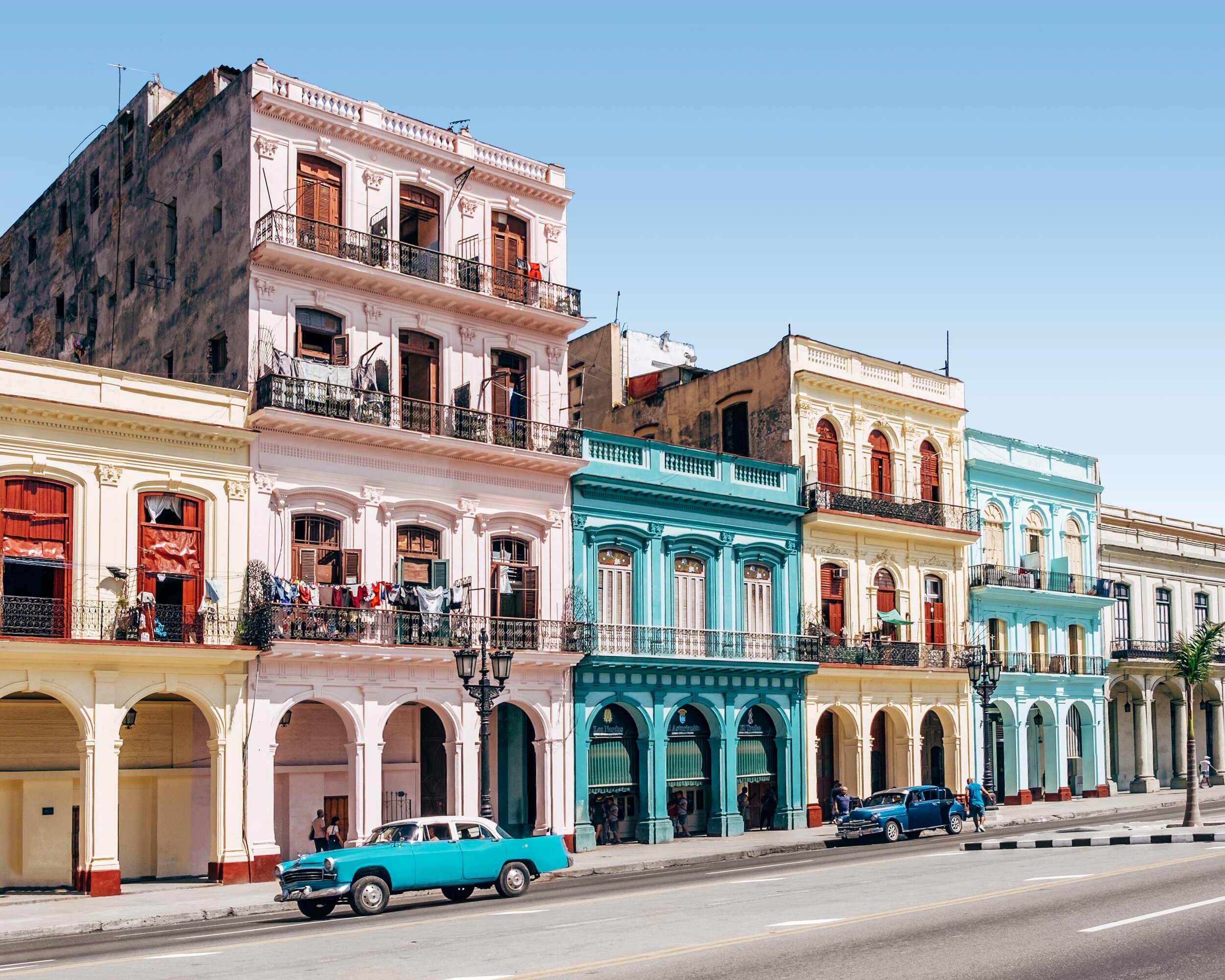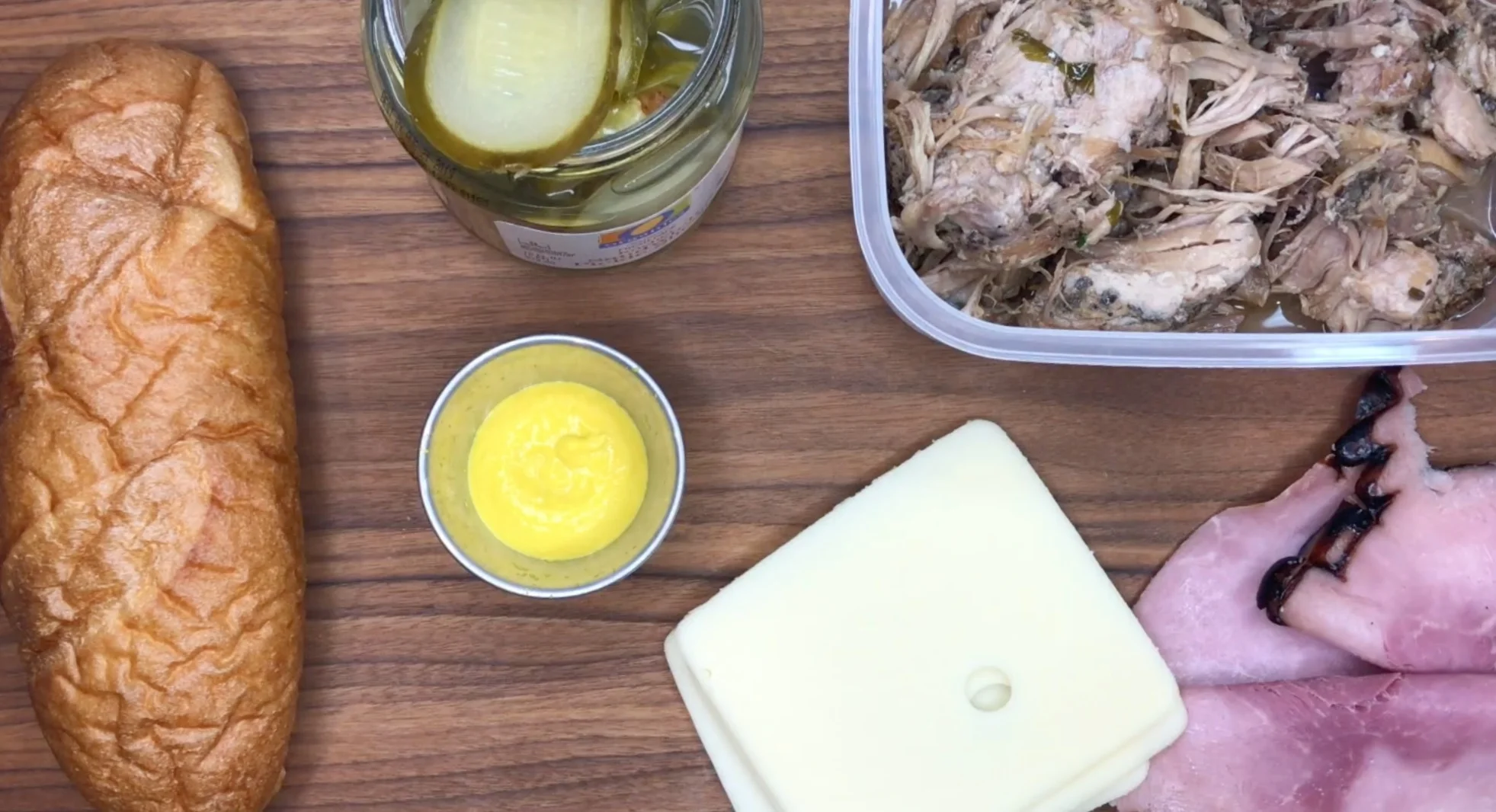Have you been daydreaming about the Caribbean? Longing to ride in a classic car and sip on daiquiris? Or maybe craving listening to jazz music from a tiled balcony overlooking a historic city? Before you book anything, here is an extensive travel guide to the island of Cuba.
Logistics
Let’s start with the logistical necessities. I flew into Havana’s airport from Tampa International, a trip that lasted less than an hour. Some people suggest to fly to Mexico first so you’re not coming from the United States, or take a cruise so the paperwork (that I’ll explain soon) are taken care of for you. However, Southwest Airlines gives passengers the option to purchase the necessary Cuban visa with the flight and covers the required health insurance in the fees. So it was actually the easiest, cheapest option.
One of the reasons many people don’t think of traveling to Cuba is because it is believed that Americans are not allowed into the country. The regulations on American tourism have fluctuated within the last few years, and the rule in 2019 is this: Americans can technically participate in Cuban tourism, but they must have a reason. On the Cuban visa, citizens of the United States must mark their purpose of travel. The options range from Government Association to Education. If you’re planning on being a “tourist” in Cuba, the option you mark on the visa application is Service of the Cuban People. This means that you’re traveling to the nation to benefit the citizens, which is a very flexible and honest definition. While I was not questioned about my travel plans at the airport, to be safe I’d suggest packing travel sized toiletries to donate to your AirBnb, hotel, or any people you meet while in Cuba. I also had my itinerary on hand, just in case. Once you’ve filled out your visa, purchased your health insurance, and printed your documents, you’re ready to travel to Cuba.
Another aspect of Cuban travel to be aware of is their unique currency system. In this country, there is a local currency and a tourist currency. CUC is the tourist currency that you’ll receive that the airport. If you’re coming from the United States, please convert your USD to Euros or Canadian Dollars before getting on your flight. The reason for this is that USD incurs a 10% conversion fee no matter where you exchange it. Alternatively, the conversion fee for Euros is closer to 3%. This will save you so much money in the long run, seeing as almost every restaurant and shop in Cuba only takes cash. If you’re on a budget and want to use CUP, you’ll need to ask for it when you buy something from a street vendor. Hand them 5 CUC and ask for the change in CUP - this way you’ll pay $0.25 for a curro instead of $2. I kept it simple and stuck with CUC, but it’s up to you.
Now that you have all of the logistics out of the way, let’s get to exploring!
Cuban Must-Sees
Cuba is a gorgeous island filled to the brim with fascinating history, unique artwork, and stunning landscape. If you’re planning a trip over a long weekend, you’ll have the perfect amount of time to explore Old Havana and its surroundings. If you’ll be in Cuba longer, though, the rest of the island offers jungle-covered mountains, family-owned tobacco farms, and old colonial wonders.
Havana is Cuba’s capital, and a twenty-five minute ride in a classic car from the airport will drop you directly in the historic district, Old Havana. With its mix of faded pastel buildings, plazas, parks, and ornate architecture, I spent hours wandering the side streets. Your ears will love the classic Spanish and jazz music radiating from restaurants, and your taste buds will thank you when you decide to buy your third churro from a street vendor. Make sure to visit all four historic plazas to feast your eyes on old churches, monuments, and statues. The city of Havana is also home to the Malecon, a long stretch of sidewalk that looks out onto the Caribbean Sea. Follow this stunning walkway to El Morro or Castillo de la Real Fuerza, two strong forts that defended Havana from pirates in the 16th century. After touring the fascinating museum, you can grab drinks at La Guarida, a restaurant every visitor to Cuba must experience. Be sure to indulge in the best Cuban food! However you decide to explore the capitol, Havana is a city you won’t soon forget.
If you have time to venture outside of Havana, a four hour taxi will bring you to the colonial town of Trinidad. Peruse through the bright buildings to learn about Cuba’s production of sugar, explore Topes de Collantes National Park, or horseback ride through nature preserves. A laid-back, alluring town, Trinidad is sure to steal your heart.
Three hours West of Havana is Viñales, a valley town and the gateway to Cuba’s Sierra de los Organos mountains. One of the main reasons that every tourist should make their way over to Viñales is the connection you can make with local farmers. Tour the famous tobacco fields where Cuban cigars are made, take a horseback ride up a mountain range, and stay with a local family to learn their way of life. If authentic Cuban cigars are on your souvenir list, there is absolutely no better place to find them than a Viñales field.
Packing Tips
Cuba is the largest island in the Caribbean, and 90 miles South of the Florida Keys. So, it’s hot! I visited in November and it was 80 degrees and humid. Make sure to pack light, linen clothes, walking shoes, sandals, and sunscreen! You’re also going to want to bring flowy dresses, and if you’re planning on visiting one of the beaches, swimsuits! Also, don’t forget your camera (and charger), sunglasses, a water bottle, and an umbrella. It’s hot, but it’s also tropical, so try to be as prepared as possible.
Extras
Just a few more things before you book that ticket! Be prepared for taking a social media break. Although it’s becoming more accessible, the internet is scarce and wifi is hard to find. You can buy wifi cards, but they’re expensive - $6 for an hour of use. So, bring print outs of your boarding passes (there and back), the full address of your accommodation, and a map. Take your trip to Cuba as an excuse to unplug and unwind.
Lastly, the airport seems to move in slow motion. We arrived close to three hours early for our flight, and it took an hour and a half to check our bags, exchange our currency back to Euros, and get through security. Make sure you give yourself ample time to get to your “gate” - it’s one big waiting room. Don’t be scared of waiting too long, the airport has duty-free rum, cigars, and snacks!
There you have it, my ultimate guide to traveling through Cuba! Whether you thoroughly explore Havana or wander throughout the island, this country can appeal to everyone. Ready to book now? Did I miss something? Do you have any questions? Please leave a comment below! Happy Exploring!
x, Grace Poulos, @chasinggracee


























In the middle of the Caribbean, Cuba is one of the most beautiful islands in this archipelago. The Island of Cuba is characterized by unique landscapes and a privileged climate all year round. In addition, Cuban architecture has had a very particular stamp, always authentic and legitimate.